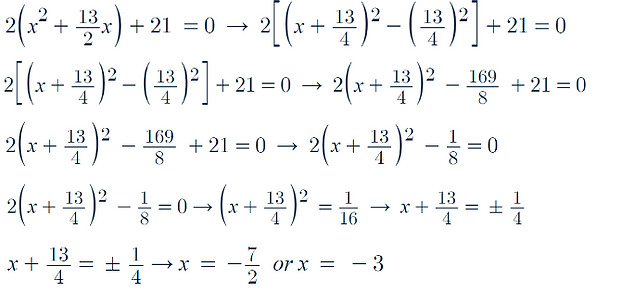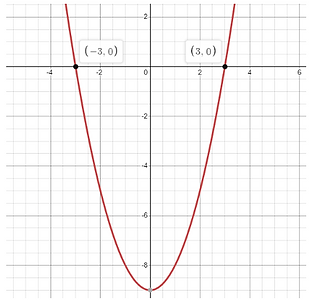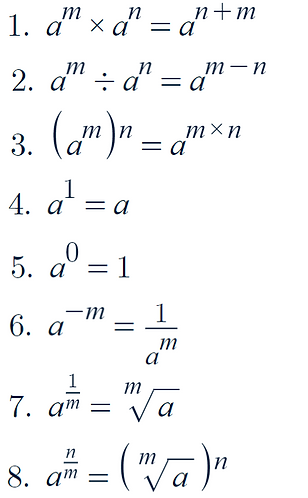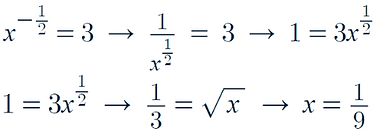Overview:
-
Manipulation of rational expressions
-
Manipulation of formula expressions
-
Factor Theorem
-
Quadratic Equations
-
Inequalities
-
Index Laws
Adding and Subtracting Rational Expressions
-
In order to add or subtract rational expressions we must first make the denominators of each fraction the same
-
Let's take this expression:
-
In order to make the denominators the same, we have to multiply them together
-
As we have multiplied each fraction by the denominator of the other, in order for them to remain the same we must add the denominators to the to like so:
-
Now we can combine our fractions:
-
Now we just expand out brackets and simplify where possible:
-
Here we can see that there is no possible simplification, and therefore this is our final answer
Practice Question:
Solution:
Multiplying and Dividing Rational Expressions
-
In order to multiply rational functions you just have to multiply the numerators together and the denominators together
-
For example:
-
In order to divide you must invert the second fraction and now you can just multiply them together
-
For example:
Practice Question:
Solution:
Manipulation of Formula Expressions
-
This is rearranging equations in order to change the subject of the equation
-
The subject of the equation is the variable that is being worked out
-
For example in the equation y = 2x + 1, y is the subject
-
In order to rearrange the to make a different variable the subject we must use our algebraic rules
-
Let's take a look at the question:
-
Here we want of make v the subject
-
So we start by multiplying by y to get:
-
Now we minus u in order to make v the subject:
Practice Question:
Solution:
Factor Theorem:
What is the Factor Theorem:
-
If f(a) = 0, then the remainder is 0, so (x - a) is a factor of f(x)
For example:
-
From this we know that x = 2 is a solution of f(x) as (x-2) is a factor:
-
Therefore we find out what f(2) is equal to
-
As f(2) = 0, we know that (x - 2) is a factor so we finish with a concluding statement
"Therefore, by the factor theorem, as f(2) = 0, then (x – 2) must be a factor of f(x)"
Quadratic Equations:
There are 3 ways to solve quadratic equations:
-
Factorising
-
Completing the square
-
Using the quadratic equation
The general formula for quadratic equations:
Factorising:
-
Consider the equation:
-
In order to factorise this we start by finding factors of our c value multiplied by the a value in the quadratic equation
-
Here this is 1 x 15 = 15
-
These factors must add to equal 8, which is our b value in the general formula
-
Here we can see that 5 and 3 are our factors of 15 that add to equal 8
-
Knowing this we can separate the 8x into 3x + 5x:
-
Now we can factorise to parts of our equation:
-
Now we know that (x+3) and (x+5) are factors of our equation:
-
Therefore our solutions are x = -3 and x = -5
Practice Question:
Solution:
Completing the square:
-
Let's consider the same example:
-
In order to complete the square we start be factoring out the a value in the general formula
-
Here it is just 1
-
Now we divide our b value by 2 and turn the x2 into an x, and square the whole thing
-
We then must minus 42 as produce from the quadratic formed, but is not in our original equation
-
Now we can solve for x
Practice Question:
Solution:
Quadratic Formula:
The quadratic formula equation:
-
In order to use the quadratic formula all we have to do is plug in the values from our quadratic equation and solve
-
For example:
-
All we have to do is plug in 1, 8 and 15 accordingly:
Inequalities:
Solving linear inequalities:
-
In order to solve linear inequalities we need to treat them as equations
-
For example:
-
Here we just rearrange in terms of x
-
And this is our range of values for x
Solving Quadratic Inequalities:
-
In order to solve quadratic inequalities we need to rearrange them in terms of 0
-
For example:
-
Then we need to factorise:
-
Now we know our solutions are x = 3 and x = -3
-
Now we can sketch our quadratic graph
-
As we know that our range of value of x need to be below 0 as (x+3)(x-3) is less than 0, the range of values of x will lie below the y axis
-
Therefore the range of values of x are -3 < x < 3
Practice Questions:
1.
2.
Solutions:
1.
2.
Index Laws:
Practice Question:
Solution:
























